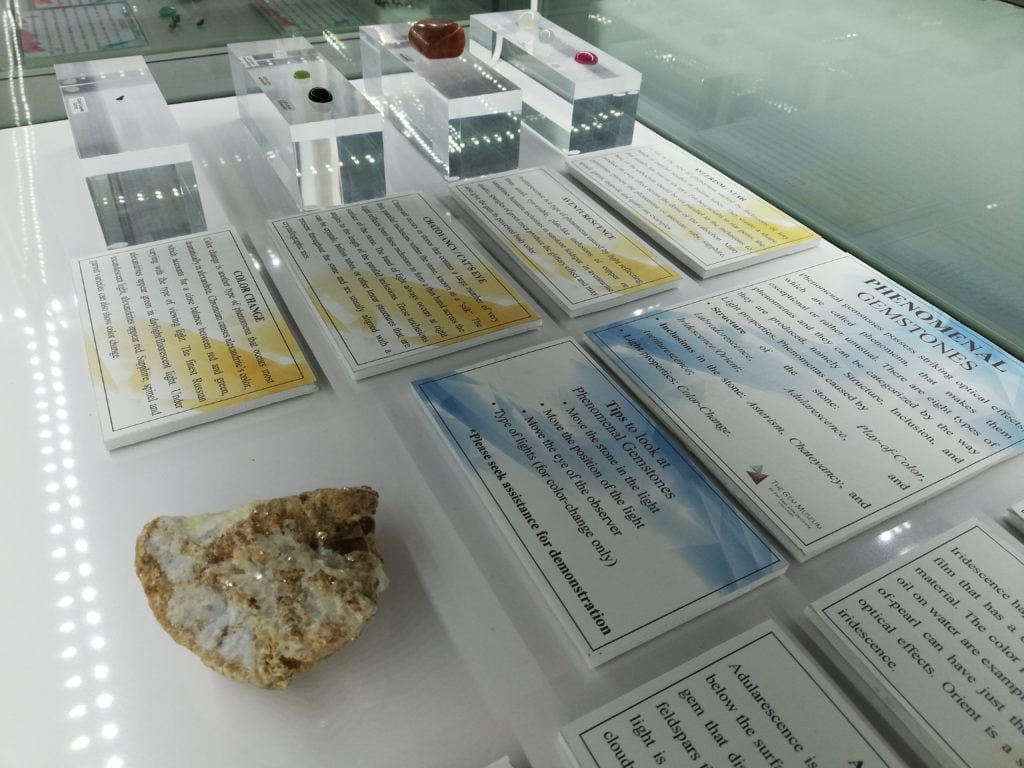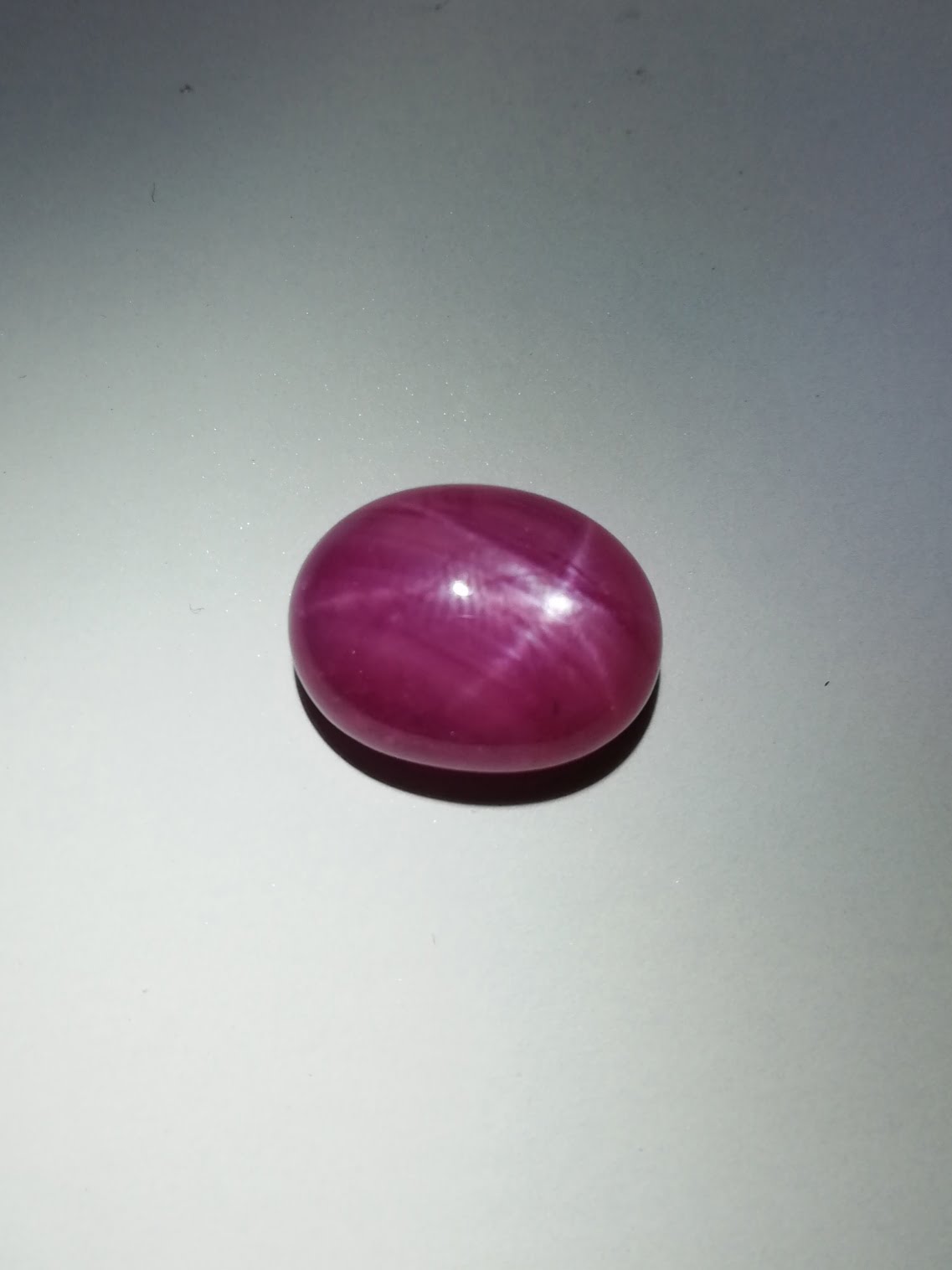PHENOMENAL GEMSTONES
Phenomenal gemstones possess striking optical effects, which are called phenomena that makes them exceptional or rather unusual. There are eight types of phenomenas and they can be categorized by the way they are produced, namely Structure, Inclusion, and Light properties. Phenomenas caused by
- Structure of the stone: Play-of-Color, Labradorescence, Adularescence, and Iridescence/Orient;
- Inclusions in the stone: Asterism, Chatoyancy, and Aventurescence;
- Light properties: Color-Change.
Play-of-Color
Play-of-color only occurs in precious opal and it’s caused by millions of tiny silica spheres stacked in layers and held together by a mixture of slightly different silica and water. When light interacts with the silica spheres, a diffraction of light causes flashes of spectral colors. These color depend on the size of the silica spheres. Smaller spheres produce blue to green spectral color and larger spheres produce red.
An elongated opal displaying a full range of spectral colors.
Iridescence / Orient
Iridescence happens when light passes through a thin, transparent film that has a different refractive index from the surrounding material. The color patterns in soap bubbles or on a thin film of oil on water are examples of iridescence. Pearl nacre and mother-of-pearl can have just the right structure to display iridescent optical effects. Orient is a special term used to describe pearl iridescence.
An fire agate displaying mild iridescence within its botryoidal structure.
Adularescence
Adularescence is a soft glow of light that appears to float just below the surface of a polished gemstone. Moonstone is the only gem that display it and it composed of two different types of feldspars that vary in thickness and regularity. In moonstone, the light is scattered in many directions giving it the characteristic cloudy bluish-white light.
A moonstone with blue sheen.
Labradorescence
Labradorescence occurs when light enters the stone, strikes a twinning gap within the stone and reflects from it. As labradorite is prone to twinning, light reflects from various parts of the stone can give the stone a multi-colored appearance. Labradorite is well known for these spectacular displays of color.
A rounded labradorite showing off a mass of blue labradorescence.
Asterism / Star
A star is the type of phenomena caused by inclusions of tiny bands of parallel needles or hollow tubes. They create a shape that usually has four or six rays. For best results in star gems, the base of the cabochon should be cut parallel to the inclusions to produce an even effect across the dome of the cabochon. Many gemstones possess the phenomena of asterism: ruby, sapphire, spinel, garnet, diopside and quartz are examples.
An opaque ruby displaying a six-legged star.
Chatoyancy / Cat’s Eye
Chatoyant occurs in stones that contain a large number of very thin parallel inclusions known as a “silk”, within the stone. The light reflects from these inclusions to form a thin band across the surface of the stone. The band of light always occurs at right angles to the length of the parallel inclusions. These inclusions can be crystals, hollow tubes, or other linear structures that are present throughout the stone and are usually aligned with a crystallographic axis.
A cat’s eye actinolite exhibits a mild chatoyancy with the help of a ridge across the centre of the stone.
Aventurescence
Aventurescence is a type of phenomena caused by light reflecting from small, eye-visible, plate-like inclusions of copper or sometimes hematite inclusions in sunstone feldspar. In aventurine quartz, spangles of green mica produce the glittery effect and may also give the gem its perceived body color.
A sunstone with copper plate inclusion showing patches of glitters.
Color Change
Color change is another type of phenomena that occurs most dramatically in alexandrite. Chromium causes alexandrite’s color, which accounts for a close balance between red and green, varying with the type of viewing light. The finest Russian alexandrites appear green in daylight/fluorescent light. Under incandescent light, alexandrites appear red. Sapphire, spinel and garnet varieties can also show color change.
A pear shaped alexandrite, purplish in incandescent light and greenish in fluorescent light.
People say ‘a picture worth a thousand words’, but to appreciate phenomenal gemstones it is best to view it hands on. Here at The Gem Museum provide hands on experience with tips and guides on viewing the phenomenals that will put you in awe.












Please tell me why a Singapore chain is called a Singapore chain.
HI, we are not sure. But it could well be because it is something made in Singapore or popularized in Singapore. For the traders, we use more specific descriptive terms, so that we can understand the specific type of products. This term could be for attracting consumers.